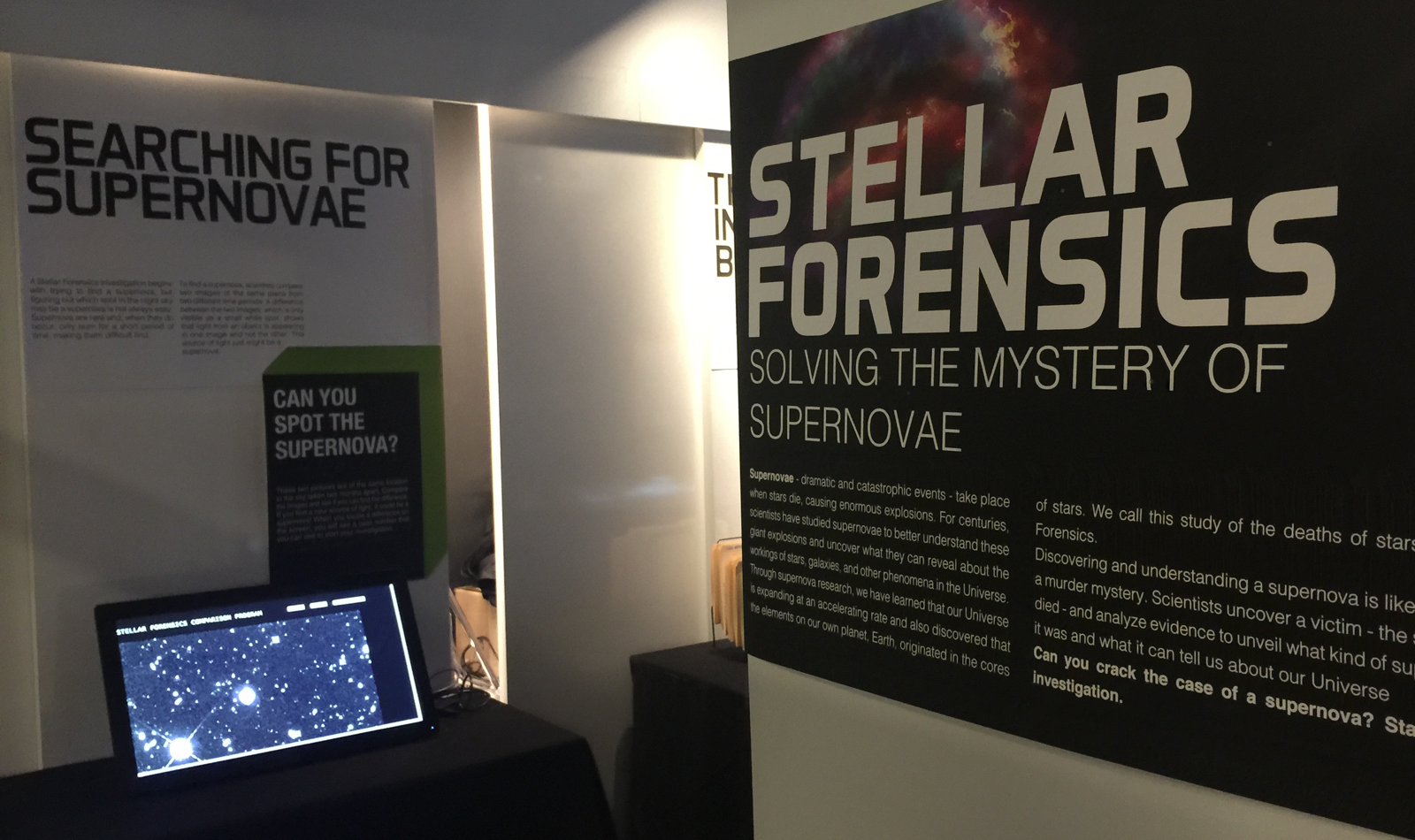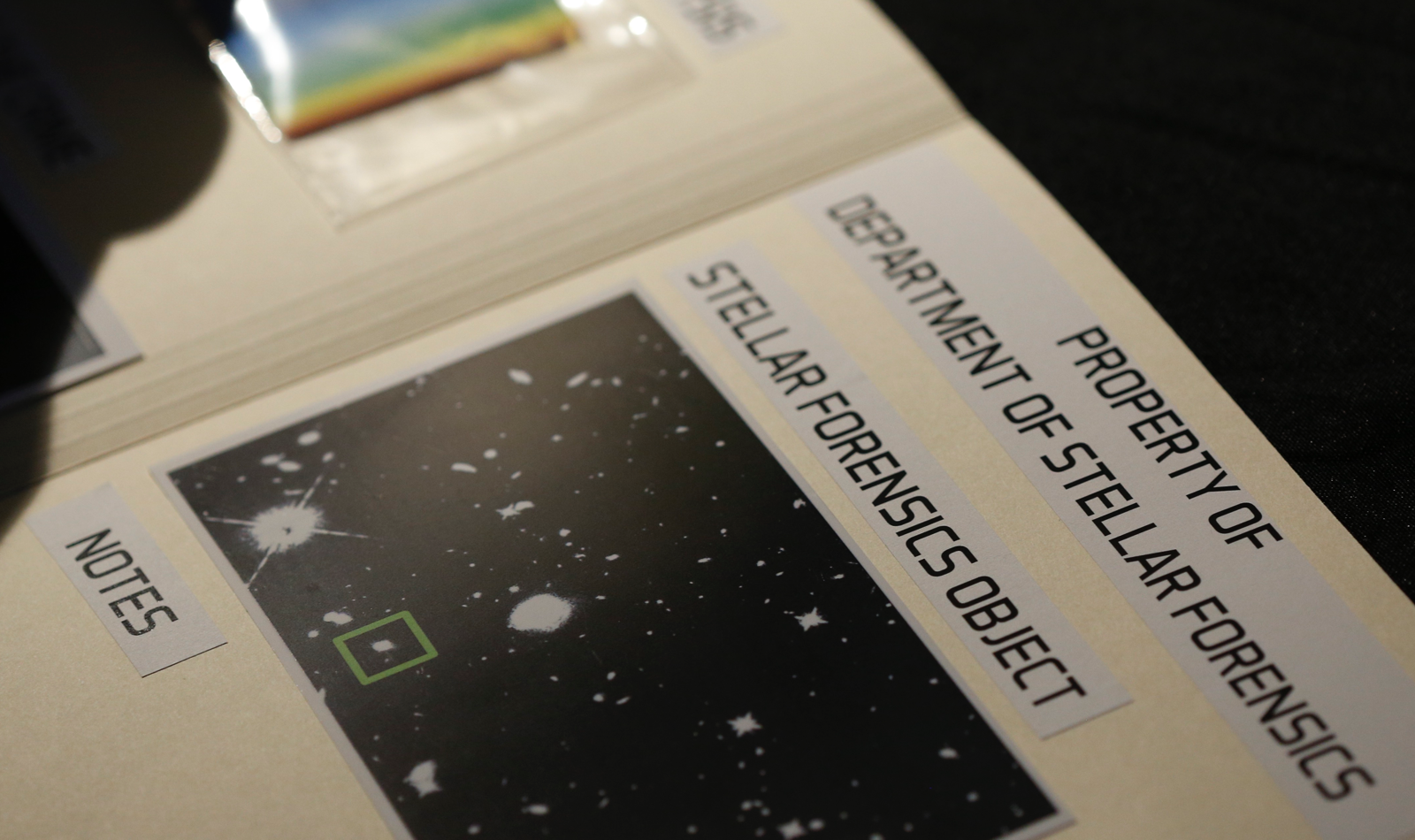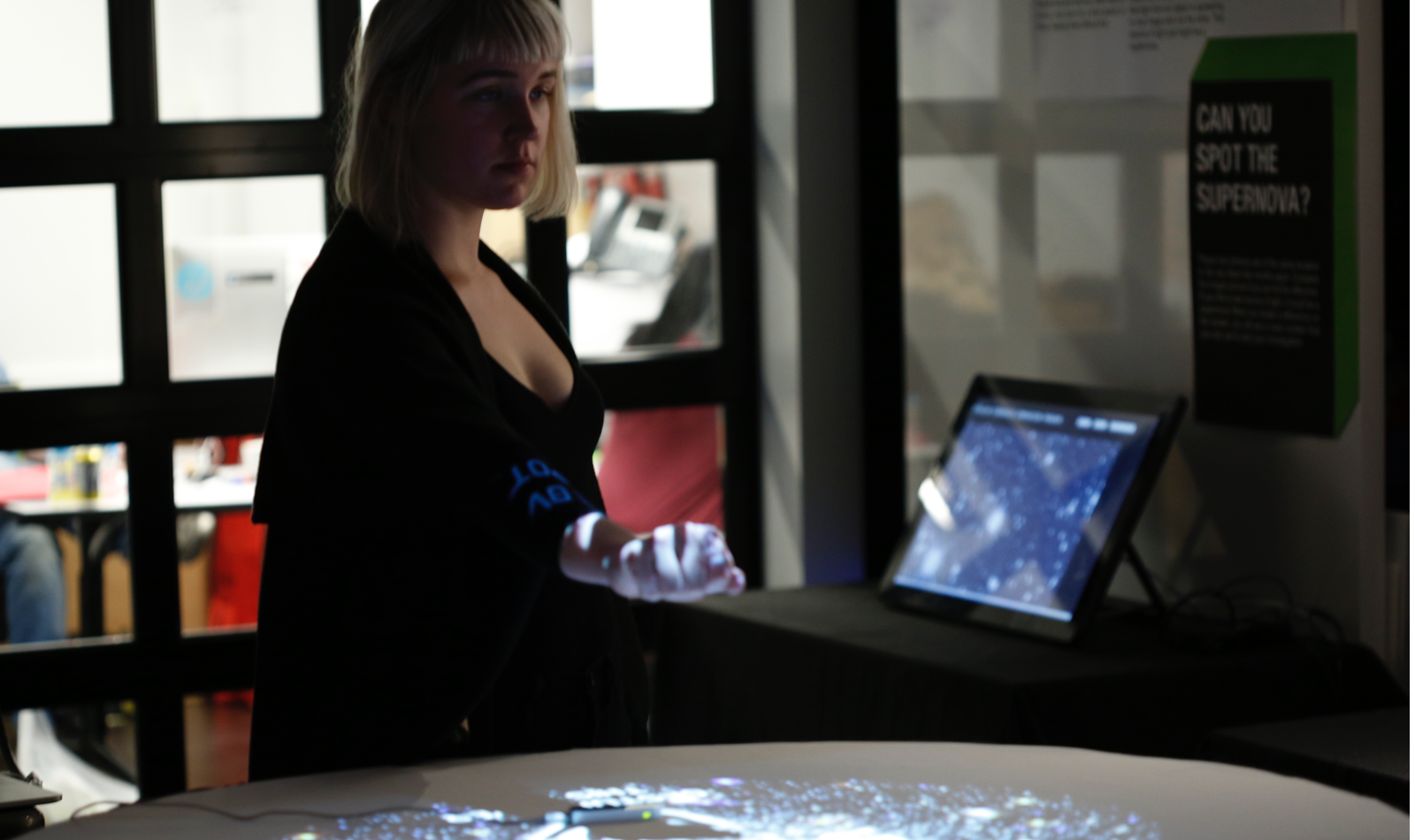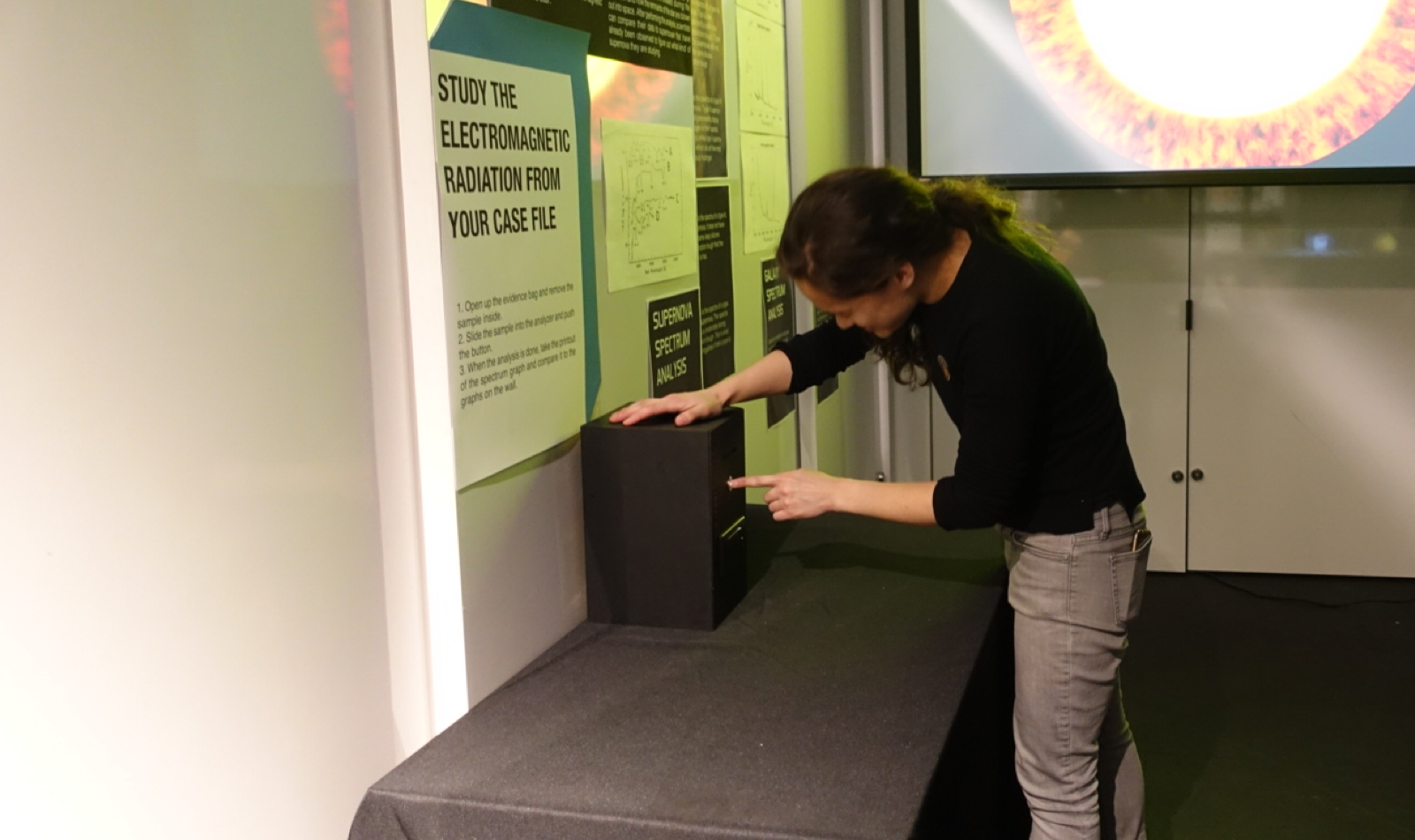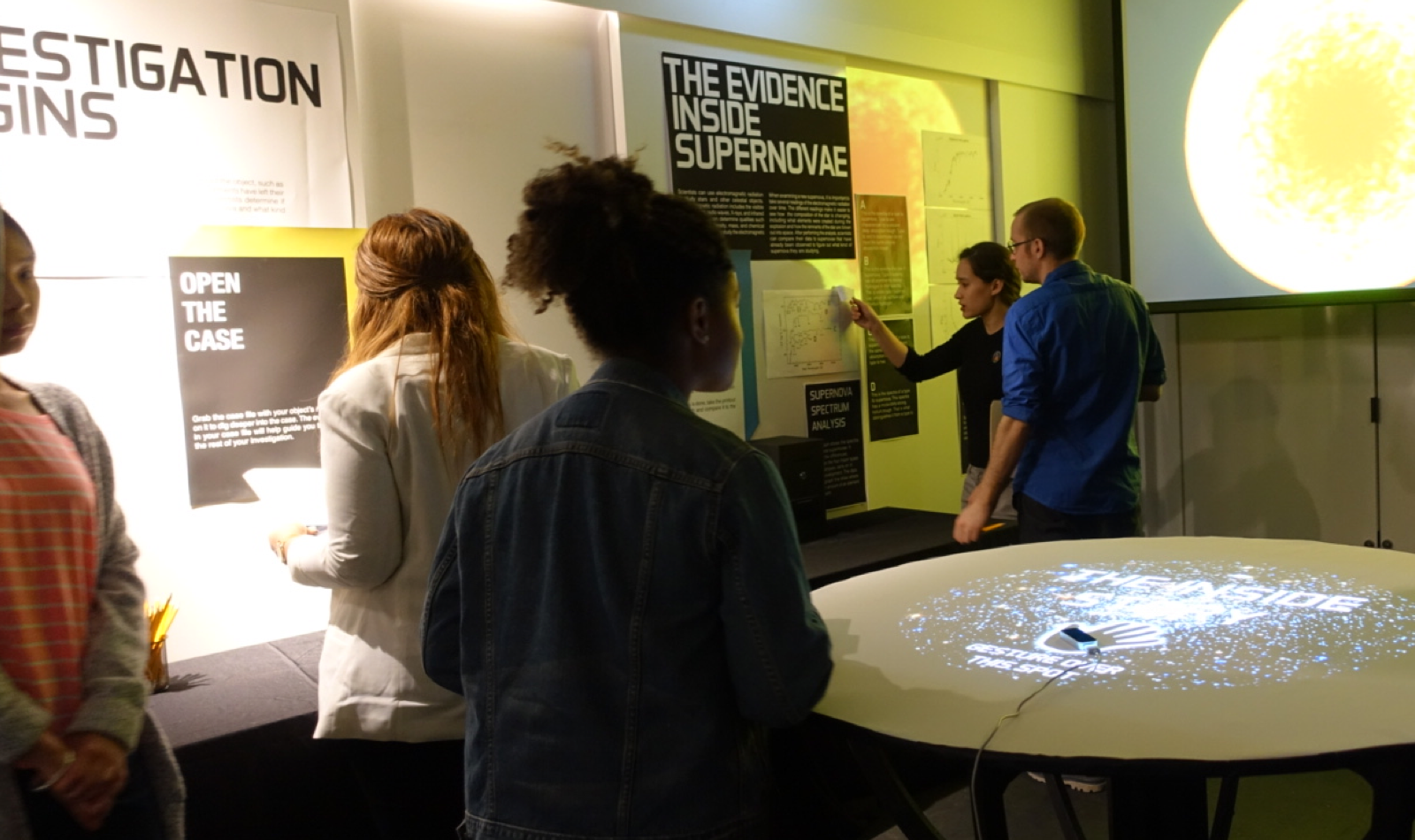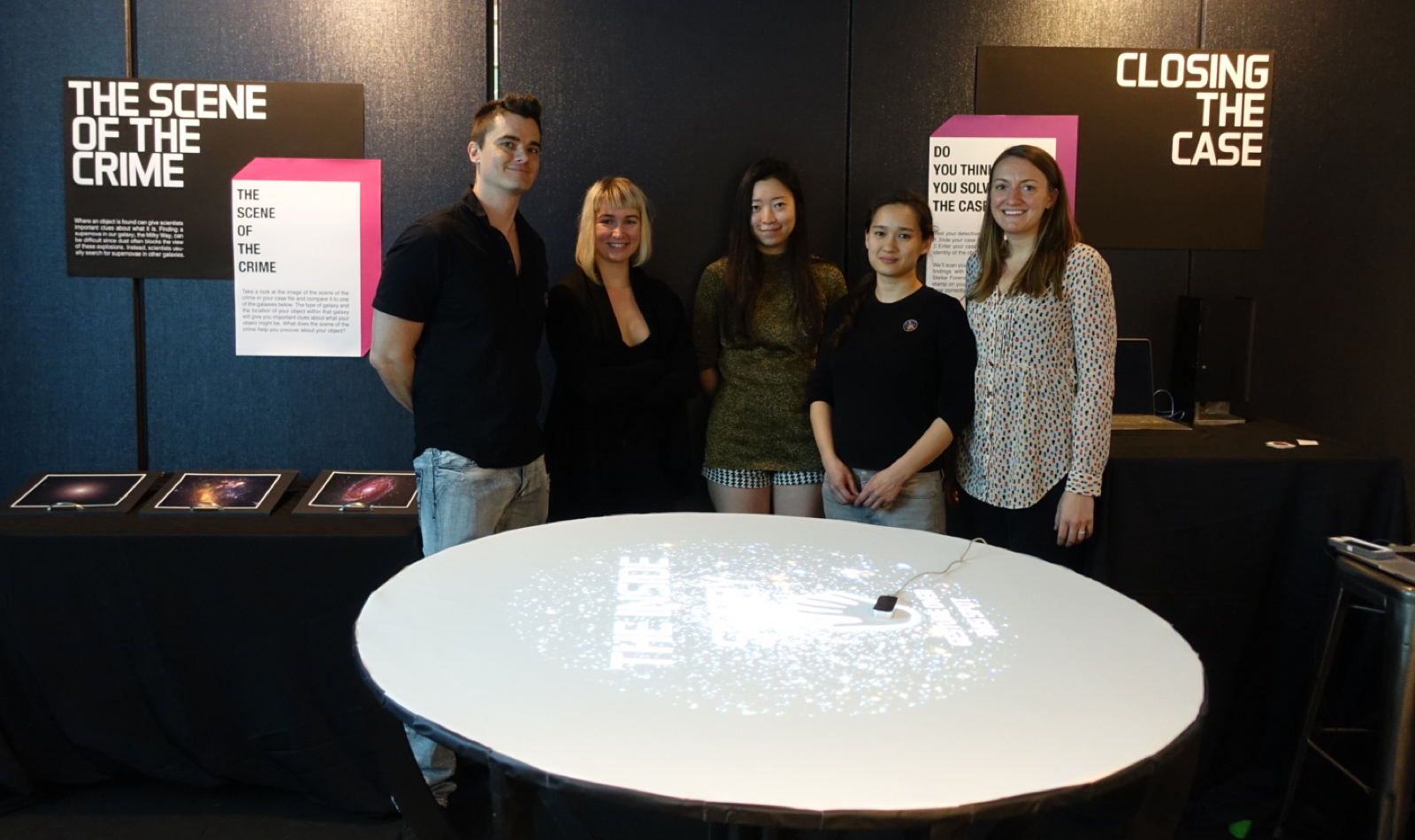
STELLAR FORENSICS
CATEGORY: UX, Exhibition Design, Fabrication
TOOLKITS: Arduino, Sketch
COLLABORATORS: Jennifer Tis, Chelsea Pfhol, Quest Kennelly, Yue Zhang
ROLE: Project Management, UX, Research, Copywriting, Fabrication

CATEGORY: UX, Exhibition Design, Fabrication
TOOLKITS: Arduino, Sketch
COLLABORATORS: Jennifer Tis, Chelsea Pfhol, Quest Kennelly, Yue Zhang
ROLE: Project Management, UX, Research, Copywriting, Fabrication
Stellar Forensics is a pop-up museum exhibit about how astrophysicists identify different types of supernovae. Visitors go on a stellar detective hunt to identify a possible supernova, as well as learning about what is going on inside type I and type II supernovae. By the end of the exhibit visitors will have learned about how supernovae work, how the experts study them, and will have cracked the case on their own unidentified stellar object.
Assistant Research Scientist Or Graur from the NYU Center for Cosmology and Particle Physics lead us through the different steps and techniques astrophysicists use to study supernovae. Some of the challenges we identified were:
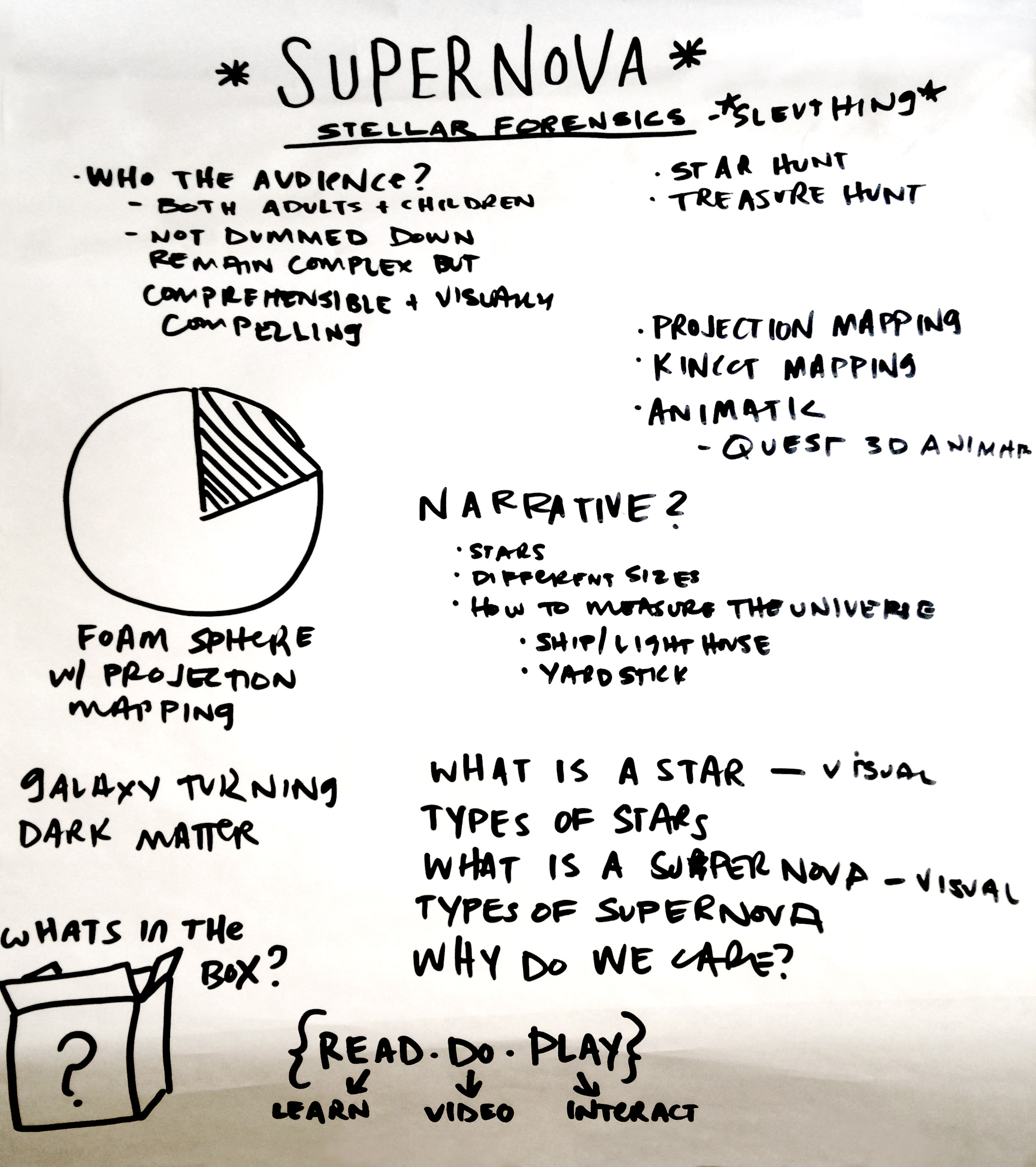
The main design challenge for this project was adapting complex and often dry research into a compelling exhibit. Ultimately, we decided to structure the experience around the process for looking for supernovae, rather than focusing exclusively on the stars themselves. They would be stellar detectives. We designed a pop-up exhibit with series of interactive displays that would guide visitors through the steps of looking for supernovae, as well as a center projection table that would focus on the inner working of the stars.
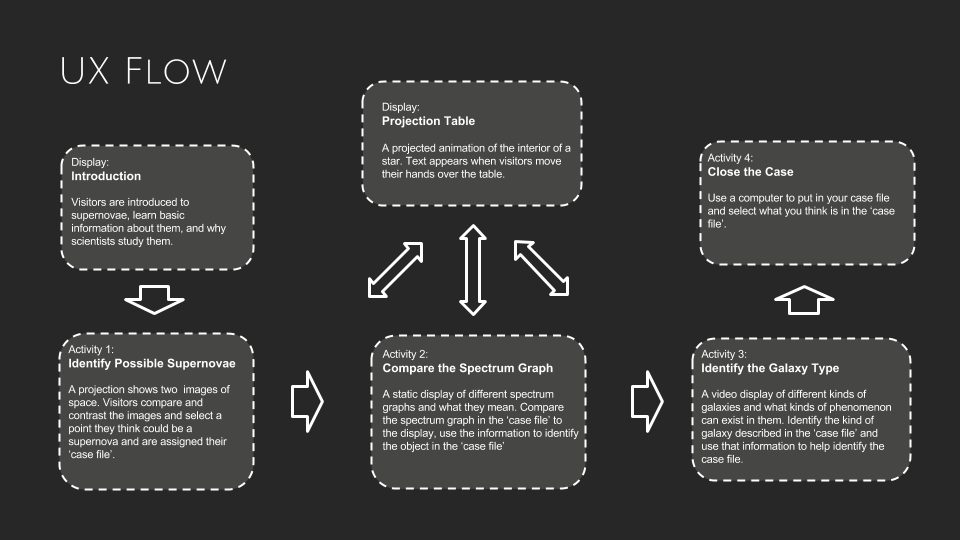
I designed and fabricated the spectrum analysis activity. Visitors would be given a 'light sample' that they could analyze and compare with known samples. The math associated with this activity is very complicated, so it was important to design an activity that captured the core of the idea without loosing the visitors interest. Also, it was important to structure the display in a way that accommodated our three user types: streakers, strollers, and studiers. I chose to skip over the math by creating a machine visitors could insert their sample into, receive a printed result, and then compare their print out to known examples. This captured the core elements of the science, without getting lost in the details.

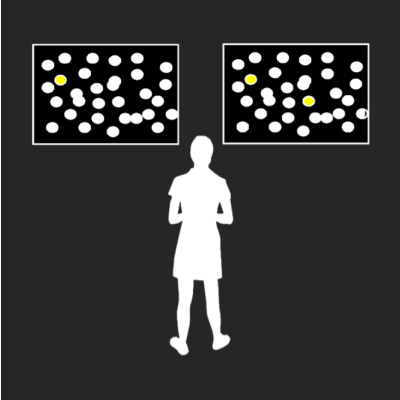
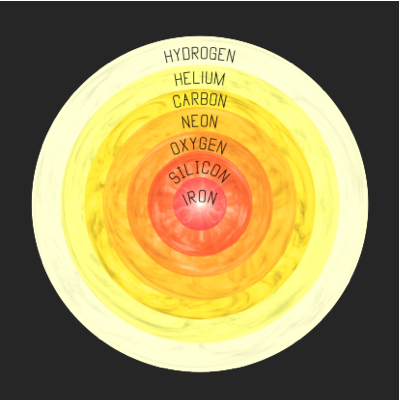

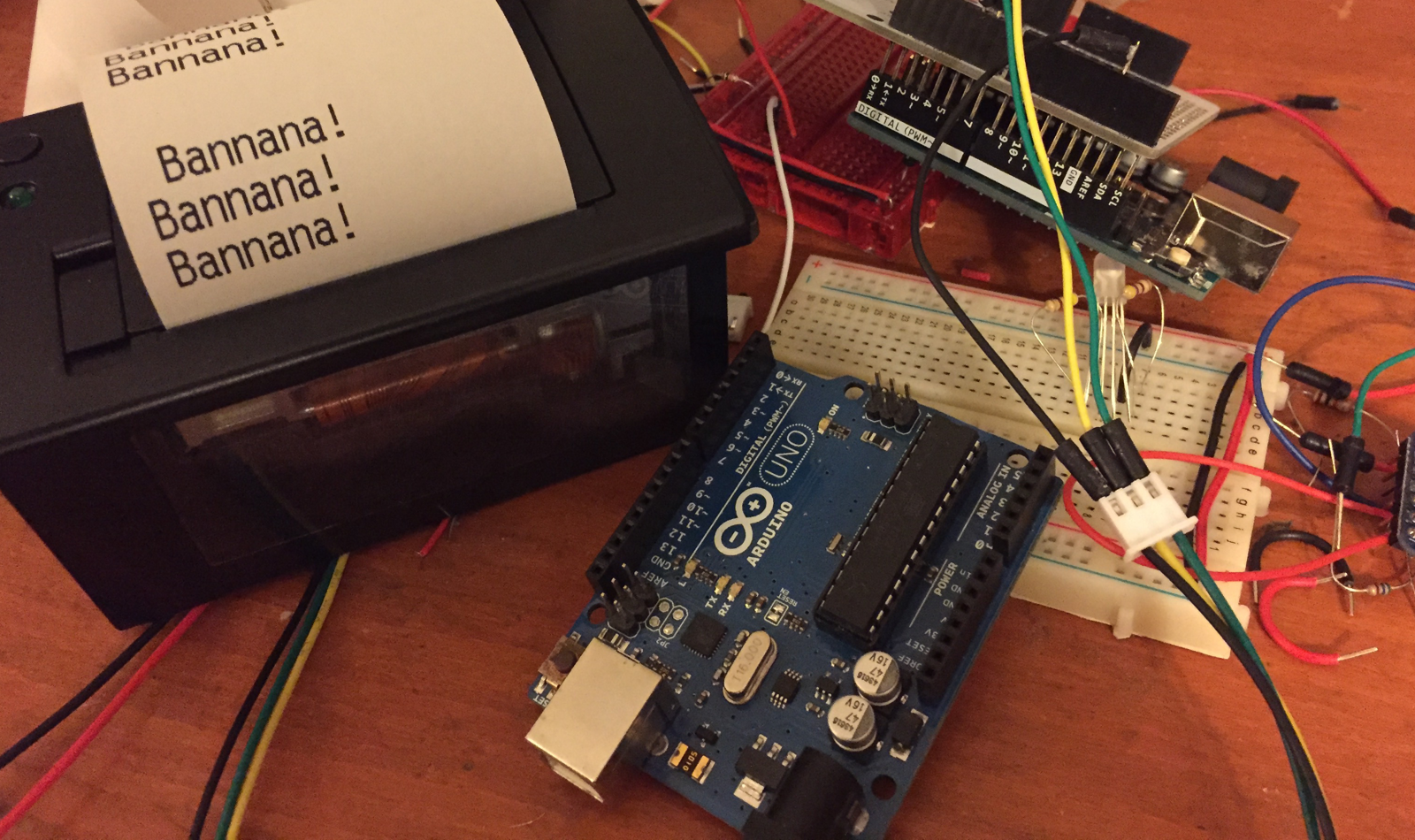
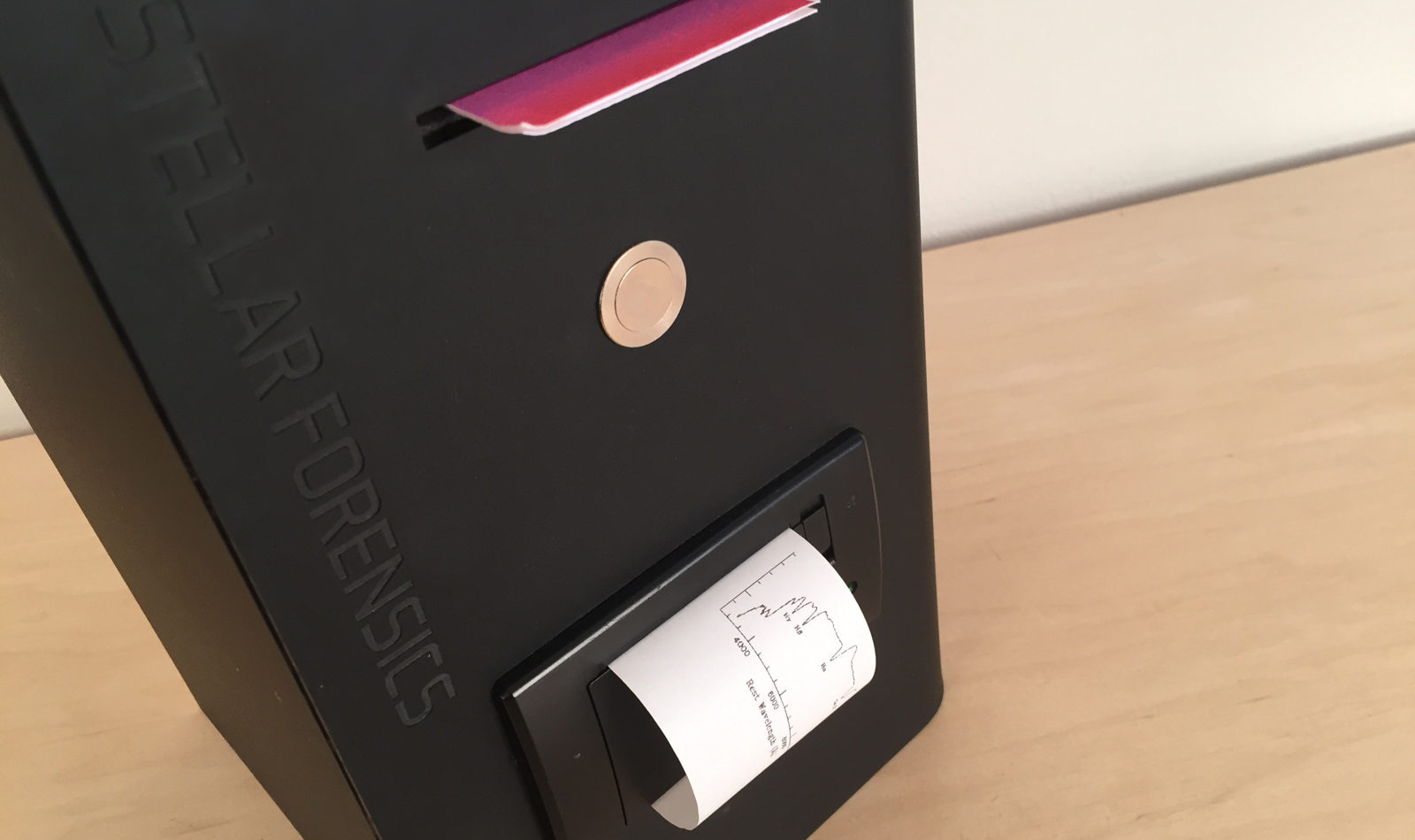
The 'analysis machine' uses an RFID reader, Arduino Mega, and a thermal printer. The housing of the machine is made from acrylic. Visitors insert the 'light sample' from their case files, an RFID card disguised with colored paper, push a button, then receive their results. Different case files came with different light samples, and would produce the appropriate results.
Our exhibit was installed for one day in the NYU Leslie eLab. We had many visitors who successfully identified their mystery stellar objects. We also presented our work to Dr. Or Graur, the research scientist who advised on our project, and many of his colleagues from the center for Cosmology and Particle Physics at NYU.
